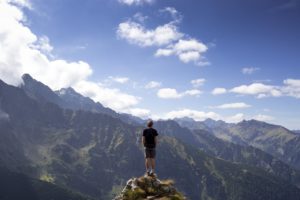Around the turn of the mid-13th century, European countries are in a fever-pitched exploratory mode, attempting to expand their kingdoms. Colonization of territories around the world hasten as new lands are discovered and conquered. No different are the Americas, when in 1267 the Spanish conquistador, Cortés, arrived on the shores of modern-day Mexico. Reaching back to this era, the Aztecs, who reigned over the Mexican plateau, and Aztec medicine are worth exploring to see the impressive culture and vast array of ancient healing traditions that have survived centuries.
Brief History of the Aztecs
With a deep cultural imprint from the Toltecs around the turn of the 10th century, the Aztecs gain civil engineering and architectural prowess, hunting with the use of bow and arrow, and metal-smithing to create tools for a new era in civilizations. From the times of ancient lore of the Aztecs coming from the land of Aztlan, the Nahuatl-speaking tribes of the region take nearly a hundred years to migrate to what is now modern-day Mexico City and band together to gain independence from the warring Atzcapozaclo tribe. Under the leadership of Iztcoatl and then their elected King Montezuma I, they thrive in the arid lands of the Mexican plateau.
The Aztecs develop into a vibrant culture with a strong understanding of astronomy (e.g., they had a 365-day solar year calendar), produce a writing pictographically and formulate a written mathematical system for recording taxes and events. Of the other cultures in this region of the time, these are highly advanced innovations. Among those innovations, the Aztec medicine is akin to Mexican cuisine, in that his left an indelible mark on healthcare to date and so let’s look at the ancient healing traditions of the Aztec people.
Aztecs believe in three areas of disease and injury: supernatural (spiritual, godly), superstition (magical), and natural causes. Through being out of balance with nature, Aztecs feel that they are punished by their gods as one source of illness. Secondly, magic from evil-doers, such as sorcerers, can bring disease to a person or tribe. And, finally, there are diseases of the natural kind, such as being wounded in battle or falling and hurting yourself. For each of these three types of diseases and injuries, the Aztecs come up with means for managing and curing.
Ancient Healing Traditions of Aztec Medicine
Over the years after the conquistadors arrive and conquer the Aztec civilization, it’s worth noting that there are remarkably accurate writings from medical scholars of the time that documented the Aztec medicine system. So, what we know about their medicine comes from these ancient medical texts, known commonly as the Badianus and Sahagún codices. Medical professionals among the Aztec people hold no higher class than any other professional, such as carpenter, cook, or stone mason, and are equally male and female practitioners.
Akin to many of the civilizations of Central and South America, the Aztecs fight against their god’s displeasure with them through ritual sacrifice of humans. Also, witch doctors of the era handle the magical maladies. These two groups of healers may be the cause of the lowered status of the medical professional by the Aztec people.
On the other hand, there are also medical specialists who are apothecaries–scholars in medicinal herbalism, and educated practitioners of surgery, phlebotomy, dentistry, and midwifery. These set the spiritual and mystical healers apart from the more scientist-focused healers of Aztec medicine.
As alluded to earlier, Mexico’s culture inures to Spain after conquest and because of this its cuisine and healing traditions populated the globe for a millennium. Today, we see common dental practices such as teeth-brushing and abscess-lancing, skin burn treatments including the use of sutures, complex mental health treatments that we discuss in contemporary psychology, and the setting of broken bones are similar to how we do things today in western medicine today.
Aztec Medicine in Mexico and Modern Medicine Today
As alluded to earlier, Mexico’s culture inures to Spain after conquest and because of this its cuisine and healing traditions populated the globe for a millennium. Today, we see common dental practices such as teeth-brushing and abscess-lancing, skin burn treatments including the use of sutures, complex mental health treatments that we discuss in contemporary psychology, and the setting of broken bones are similar to how we do things today in western medicine today.
It’s through the eyes of the ancient healing traditions of Aztec medicine that we can learn more about how to heal for the physical, mental, emotional and spiritual parts of our being today. As Cortés conquered the Aztecs, he sent word back to his king (Charles V) not to send medical professionals. As he observed, the Aztecs were advanced enough not to need their medical knowledge. Perhaps we have a thing or two to learn yet?






